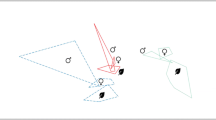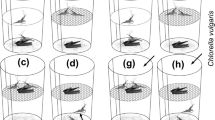Abstract—
As plant litter is typically N limited, protein digestion and amino acid assimilation are key processes in saprophagous invertebrates. The recalcitrance of dietary protein may be increased by their binding to phenolic compounds in humic substances. Binding phenolic compound to protein may be also important in humus acid formation and stabilization of nitrogen bounded protein in soil organic matter. Consequently, better understanding of interaction of protein and phenolic compounds in invertebrate gut is important not only from ecophysiology perspective but also in terms of soil organic matter dynamics. In this study, we evaluated the digestive efficiency of proteins during gut passage in the litter-dwelling larva of Bibio marci. Anterior part of the midgut is highly alkaline, which agrees with the protease pH optimum. We found large differences in protease activities of the leaf litter, gut, and excrements. However, individual gut compartments were close to one another in their protease activities. The same was true for the contents of amino acids and ammonia. Also, amino acid composition differed between compartments. Litter had the high content of glutamine and serine, whereas hindgut and excrement were characterized by the high content of methionine, and the remaining gut segments had the high content of valine. Experiment with 14C-labelled protein demonstrated that gut passage improved the digestive efficiency of proteins, especially for a humic acid stabilized protein.




Similar content being viewed by others
REFERENCES
Standard Methods for the Examination of Water and Wastewater, 15th ed. (American Public Health Association, Washington, DC, 1980).
F. G. Boroojeni, B. Svihus, H. G. von Reichenbach, and J. Zentek, “The effects of hydrothermal processing on feed hygiene, nutrient availability, intestinal microbiota and morphology in poultry—A review,” Anim. Feed Sci. Technol. 220, 187–215 (2016). https://doi.org/10.1016/j.anifeedsci.2016.07.010
A. Brune, D. Emerson, and J. A. Breznak, “The termite gut microflora as an oxygen sink: microelectrode determination of oxygen and pH gradients in guts of lower and higher termites,” Appl. Environ. Microbiol. 61, 2681–2687 (1995).
B. A. Byzov, A. V. Kurakov, E. B. Tretyakova, V. N. Thanh, N. D. Toliin, and Y. M. Rabinovich, “Principles of the digestion of microorganisms in the gut of soil millipedes: specificity and possible mechanisms,” App-l. Soil Ecol. 9, 149–156 (1998). https://doi.org/10.1016/S0929-1393(98)00068-7
T. M. Clark, “Evolution and adaptive significance of larval midgut alkalization in the insect superorder Mecopterida,” J. Chem. Ecol. 25, 1945–1960 (1999).
G. W. Felton and S. S. Duffey, “Reassessment of the role of gut alkalinity and detergency in insect herbivory,” J. Chem. Ecol. 17, 1821–1836 (1991). https://doi.org/10.1007/BF00993731
J. Frouz, “Effects of soil macro- and mesofauna on litter decomposition and soil organic matter stabilization,” Geoderma 332, 161–172 (2018). https://doi.org/10.1016/j.geoderma.2017.08.039
J. Frouz, D. Elhottová, V. Šustr, V. Krištůfek, and J. Hubert, “Preliminary data about compartmentalization of the gut of the saprophagous dipteran larvae Penthetria holosericea (Bibionidae),” Eur. J. Soil Biol. 38, 47–51 (2002). https://doi.org/10.1016/S1164-5563(01)01123-2
J. Frouz, P. Jedlička, H. Šimáčková, and Z. Lhotáková, “The life cycle, population dynamics, and contribution to litter decomposition of Penthetria holosericea (Diptera: Bibionidae) in an alder forest,” Eur. J. Soil Biol. 71, 21–27 (2015). https://doi.org//10.1016/j.ejsobi.2015.10.002.
J. Frouz, V. Krištůfek, X. Li, H. Šantrůčková, V. Šustr, and A. Brune, “Changes in amount of bacteria during gut passage of leaf litter and during coprophagy in three species of Bibionidae (Diptera) larvae,” Folia Microbiol. 48, 535–542 (2003). https://doi.org/10.1007/BF02931337
J. Frouz, X. Li, A. Brune, V. Pižl, and E. V. Abakumov, “Effect of soil invertebrates on the formation of humic substances under laboratory conditions,” Eurasian Soil Sci. 44, 893–896 (2011). https://doi.org/10.1134/S1064229311080047
J. Frouz, A. Špaldoňová, Z. Lhotáková, and T. Cajthaml, “Major mechanisms contributing to the macrofauna-mediated slow down of litter decomposition,” Soil Biol. Biochem. 91, 23–31 (2015b). https://doi.org/10.1016/j.soilbio.2015.08.024
D. Gillon and J.F. David, “The use of near infrared reflectance spectroscopy to study chemical changes in the leaf litter consumed by saprophagous invertebrates,” Soil. Biol. Biochem. 33, 2159–2161 (2001). https://doi.org/10.1016/S0038-0717(01)00139-0
H. Godel, T. Graser, P. Földi, P. Pfaender, and P. Fürst, “Measurement of free amino acids in human biological fluids by high-performance liquid chromatography,” J. Chromatogr. A 297, 49–61 (1984). https://doi.org/10.1016/S0021-9673(01)89028-2
R. Ji and A. Brune, “Digestion of peptidic residues in humic substances by an alkali-stable and humic-acid-tolerant proteolytic activity in the gut of soil-feeding termites,” Soil Biol. Biochem. 37, 1648–1655 (2005). https://doi.org/10.1016/j.soilbio.2005.01.026
A. Kappler and A. Brune, “Influence of gut alkalinity and oxygen status on mobilization and size-class distribution of humic acids in the hindgut of soil-feeding termites,” Appl. Soil. Ecol. 13, 219–229 (1999). https://doi.org/10.1016/S0929-1393(99)00035-9
A. Kappler, R. Ji, and A. Brune, “Synthesis and characterization of specifically 14C-labeled humic model compounds for feeding trials with soil-feeding termites,” Soil Biol. Biochem. 32, 1271–1280 (2000). https://doi.org/10.1016/S0038-0717(00)00047-X
X. Li and A. Brune, “Selective digestion of the peptide and polysaccharide components of synthetic humic acids by the humivorous larva of Pachnoda ephippiata (Coleoptera: Scarabaeidae),” Soil Biol. Biochem. 37, 1476–1483 (2005). https://doi.org/10.1016/j.soilbio.2005.01.004
M. Liebeke, N. Strittmatter, S. Fearn, A. J. Morgan, P. Kille, J. Fuchser, D. Wallis, V. Palchykov, J. Robertson, E. Lahive, D. J. Spurgeon, D. McPhail, Z. Takáts, and J. G. Bundy, “Unique metabolites protect earthworms against plant polyphenols,” Nat. Commun. 6, 7869 (2015). https://doi.org/10.1038/ncomms8869
M. Maraun, H. Martens, S. Migge, A. Theenhaus, and S. Scheu, “Adding to 'the enigma of soil animal diversity: fungal feeders and saprophagous soil invertebrates prefer similar food substrates,” Eur. J. Soil Biol. 39, 85–95 (2003). https://doi.org/10.1016/S1164-5563(03)00006-2
J. F. Ponge, “Humus form in terrestrial ecosystem: a framework to biodiversity,” Soil Biol. Biochem. 35, 935–945 (2003).https://doi.org/10.1016/S0038-0717(03)00149-4
F. Rocha, J. Dias, I. Geurden, M.T. Dinis, S. Panserat, and S. Engrola, “Dietary glucose stimulus at larval stage modifies the carbohydrate metabolic pathway in gilthead seabream (Sparus aurata) juveniles: an in vivo approach using C-14-starch,” Comp. Biochem. Physiol., Part A: Mol. Integr. Physiol. 201, 189–199 (2016). https://doi.org/10.1016/j.cbpa.2016.07.016
M. Schaefer, “The soil fauna of a beech forest on limestone: trophic structure and energy budget,” Oecologia 82, 128–136 (1990). .https://doi.org/10.1007/BF00318544
V. Šustr, U. Stingl, and A. Brune, “Microprofiles of oxygen, redox potential, and pH, and microbial fermentation products in the highly alkaline gut of the saprophagous larva of Penthetria holosericea (Diptera: Bibionidae),” J. Insect Physiol. 67, 64–69 (2014). https://doi.org/10.1016/j.jinsphys.2014.06.007
I. M. Szabó, Microbial Communities in Forest Rendzina Ecosystem (Akademia Kiado, Budapest, 1974).
ACKNOWLEDGMENTS
This study was supported by a grant of the Czech Science Foundation [Grant no. 17-14409S]. The radioactive work was conducted in the laboratory of Prof. Dr. B. Schink at the University of Konstanz, Germany. Petr Lemkin, PhD is thanked for comments and linguistic improvements.
Conflict of interest: none.
Author information
Authors and Affiliations
Corresponding author
Rights and permissions
About this article
Cite this article
Frouz, J., Lin, Q., Li, X. et al. Utilization of Dietary Protein in the Litter-Dwelling Larva of Bibio marci (Diptera: Bibionidae). Eurasian Soil Sc. 52, 1583–1587 (2019). https://doi.org/10.1134/S1064229319120032
Received:
Revised:
Accepted:
Published:
Issue Date:
DOI: https://doi.org/10.1134/S1064229319120032




